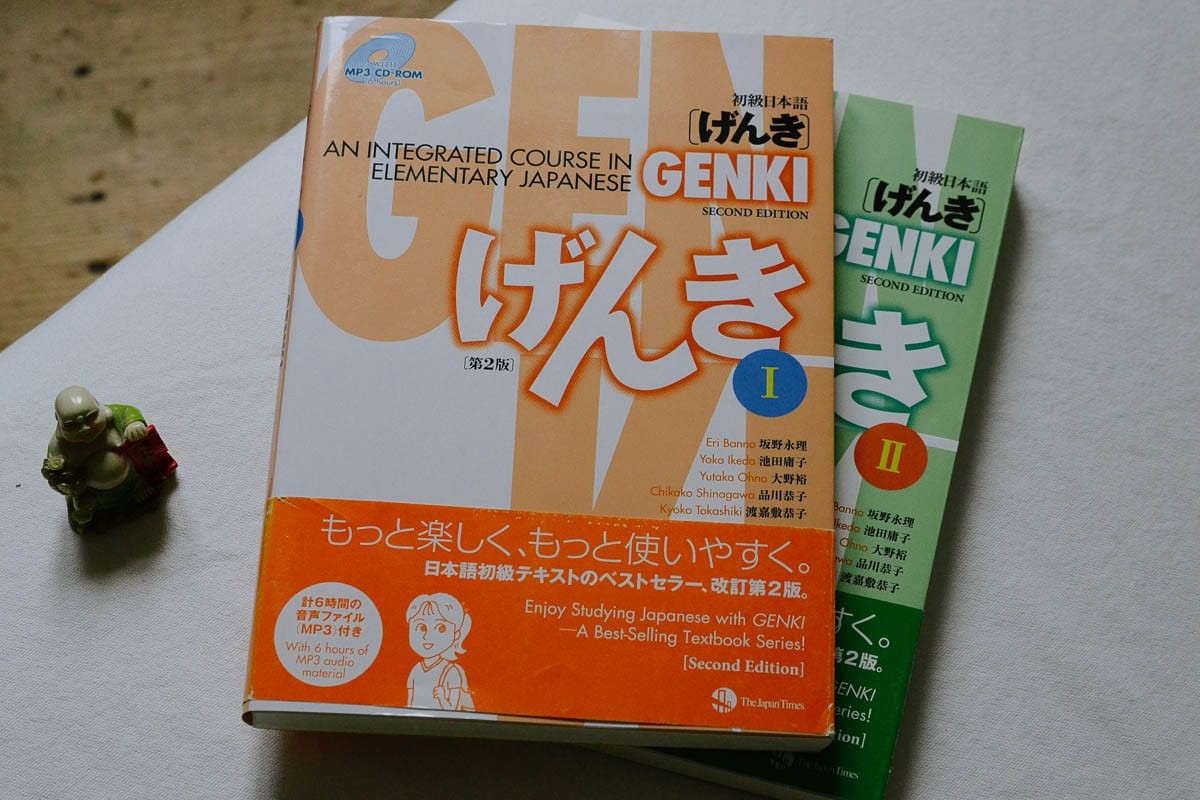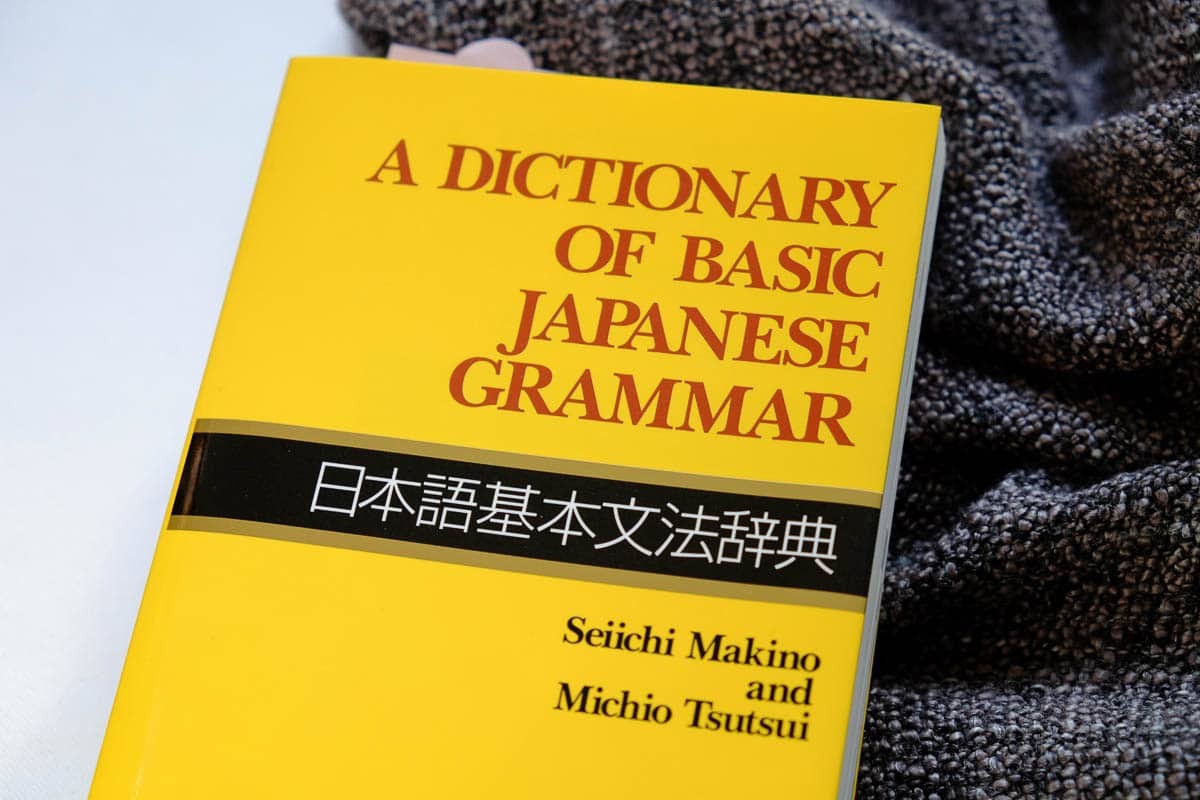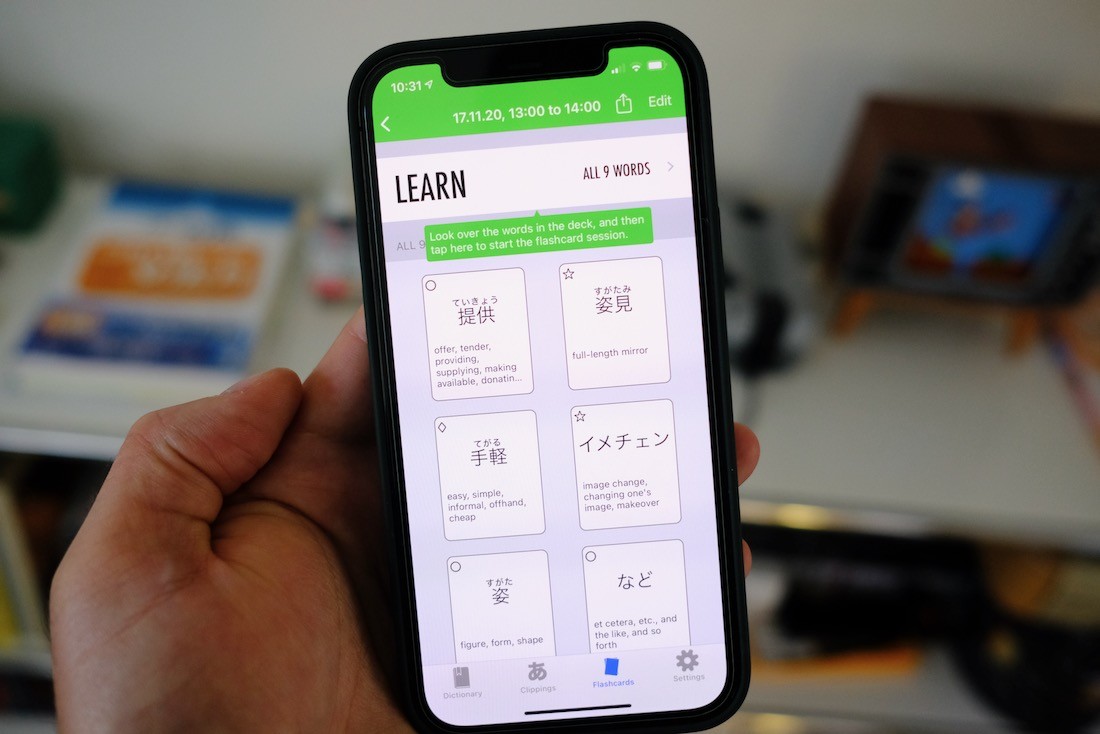Can I Learn Japanese On My Own? Absolutely! At LEARNS.EDU.VN, we believe that with the right resources and strategies, anyone can embark on a successful journey of self-studying Japanese. This article will guide you through a proven path to fluency, offering insights and tools to help you learn Japanese effectively and independently. Unlock the world of Japanese language learning, discover language acquisition tips, and explore self-study resources.
1. Laying the Foundation: Hiragana and Katakana Mastery
Before diving into complex grammar or vocabulary, mastering Hiragana and Katakana is essential. These two phonetic scripts form the foundation of the Japanese writing system. Hiragana is used for native Japanese words and grammatical elements, while Katakana is primarily used for foreign loanwords.
- Hiragana: Used for native Japanese words and grammatical particles.
- Katakana: Used for foreign loanwords (gairaigo) and emphasis.
Think of Hiragana and Katakana as the ABCs of Japanese. Just as you need to know the alphabet before reading English, you must learn these scripts before tackling Japanese.
Consider using mnemonic devices to aid memorization. Associate each character with a visual image or a familiar word. For instance, the Hiragana character “あ” (a) can be associated with an apple.
Here’s a table showcasing a few Hiragana and Katakana characters:
| Character | Script | Pronunciation | Mnemonic |
|---|---|---|---|
| あ | Hiragana | a | Looks like an apple |
| イ | Katakana | i | Resembles two reeds |
| か | Hiragana | ka | Similar to the English word “ka” |
| エ | Katakana | e | Appears like an “E” |






There are several excellent resources for learning Hiragana and Katakana:
- Dr. Moku Apps: Available on iOS and Android, these apps utilize mnemonic techniques to make learning fun and effective. They offer a structured approach and interactive exercises.
- Tofugu’s Kana Guide: This comprehensive online guide provides detailed explanations, stroke order diagrams, and practice exercises. It’s an excellent resource for visual learners.
- White Rabbit Japan Kana Flashcards: For those who prefer a physical approach, these flashcards offer a tactile way to learn and review the characters.
2. Genki: Your Gateway to Japanese Grammar
Once you’ve conquered Hiragana and Katakana, it’s time to delve into Japanese grammar. Genki: An Integrated Course in Elementary Japanese is widely regarded as one of the best textbooks for beginners. This comprehensive textbook covers essential grammar concepts, vocabulary, and cultural insights.
- Genki I: Covers basic grammar and vocabulary, introducing fundamental sentence structures and conversational skills.
- Genki II: Builds upon the foundation laid in Genki I, introducing more complex grammar and expanding vocabulary.
Genki’s strength lies in its well-structured lessons, clear explanations, and engaging dialogues. Each chapter introduces new grammar points, followed by practice exercises and real-life scenarios.
Here’s a breakdown of what you can expect from each Genki chapter:
| Section | Description |
|---|---|
| Vocabulary | Introduces new words and phrases, accompanied by audio recordings for pronunciation practice. |
| Grammar Points | Explains grammatical concepts with clear examples and detailed explanations. |
| Practice | Provides exercises to reinforce grammar and vocabulary learning, including sentence construction, fill-in-the-blanks, and conversational activities. |
| Culture Notes | Offers insights into Japanese culture and customs, providing context for language learning. |
| Conversation | Presents dialogues that showcase practical usage of the learned grammar and vocabulary in real-life scenarios, encouraging active listening and speaking practice. |
To maximize your learning with Genki:
- Follow the lesson sequence: Genki is designed to be studied in a specific order, so stick to the lesson sequence for optimal learning.
- Practice regularly: Dedicate time each day to review vocabulary, practice grammar exercises, and listen to the audio recordings.
- Engage with the material: Don’t just passively read the textbook. Actively participate by completing exercises, writing your own sentences, and engaging in conversations.
- Utilize supplementary materials: Genki offers workbooks and audio CDs to complement the textbook. Use these resources to reinforce your learning.
- Consider the Genki App: For conjugation practice, the Genki App for iOS is an invaluable tool.
Forget inferior self-study books. Genki is the gold standard. Make sure you also purchase the answer key.
Buy the book: Genki I & Genki II // Answer Key (crucial!)// Workbook I & Workbook II or check out WRJ.
3. Deciphering Japanese Grammar: A Comprehensive Dictionary
As you progress in your Japanese studies, you’ll inevitably encounter grammatical terms and concepts that require further clarification. While Genki provides a solid foundation, a comprehensive dictionary of Japanese grammar is an indispensable tool for advanced learners.
The Dictionaries of Japanese Grammar published by the Japan Times are a must have.
These dictionaries offer detailed explanations, example sentences, and usage notes for a wide range of grammatical structures. They are particularly helpful for understanding nuances and subtleties that are not always covered in textbooks.
The series includes three books:
- A Dictionary of Basic Japanese Grammar: Covers fundamental grammar concepts for beginners.
- A Dictionary of Intermediate Japanese Grammar: Explores more advanced grammar structures and expressions.
- A Dictionary of Advanced Japanese Grammar: Delves into complex grammatical nuances and literary expressions.
Here’s how these dictionaries can enhance your learning:
- Clarification of complex grammar: When you encounter a grammatical structure that you don’t fully understand, the dictionaries provide clear and comprehensive explanations.
- Nuance and usage: They offer insights into the subtle differences between similar grammatical structures, helping you use them accurately and appropriately.
- Example sentences: The dictionaries are filled with example sentences that illustrate how the grammar structures are used in context.
- Research: These books are used at Japanese teaching universities around the world.
Investing in these dictionaries is a worthwhile investment for any serious student of Japanese.
4. Immersive Listening: Boost Your Comprehension with Japanesepod101
Listening comprehension is a crucial aspect of language learning. It allows you to understand spoken Japanese, follow conversations, and appreciate the nuances of the language. Japanesepod101 is an online resource that offers a wide range of audio and video lessons designed to improve your listening skills.
- Podcast-style lessons: Japanesepod101 features engaging and informative podcast-style lessons that cover various topics, from basic greetings to advanced grammar.
- Native speakers: The lessons are presented by native Japanese speakers, ensuring that you are exposed to authentic pronunciation and intonation.
- Transcripts and translations: Each lesson comes with transcripts and translations, allowing you to follow along and understand the content.
- Grammar explanations: Japanesepod101 also provides grammar explanations and example sentences to reinforce your understanding.
To maximize your learning with Japanesepod101:
- Listen regularly: Make it a habit to listen to Japanesepod101 lessons regularly, even if it’s just for a few minutes each day.
- Focus on comprehension: Don’t just passively listen to the lessons. Actively try to understand the content and follow along with the transcripts.
- Repeat and review: Listen to the lessons multiple times and review the vocabulary and grammar points.
- Take notes: Jot down new words and phrases, and try to use them in your own sentences.
Neglecting listening comprehension can hinder your progress. Japanesepod101 is a fun and effective way to improve your listening skills.
5. Conquering Kanji and Vocabulary: WaniKani and Beyond
Kanji, the logographic characters adopted from Chinese, are a significant hurdle for many Japanese learners. However, with the right approach, Kanji can be conquered. WaniKani is an online learning system that utilizes spaced repetition to help you memorize Kanji and vocabulary.
- Spaced repetition: WaniKani uses a spaced repetition algorithm to optimize your learning, ensuring that you review the characters at the right intervals.
- Mnemonics: WaniKani provides mnemonic devices to help you remember the meaning and reading of each Kanji.
- Vocabulary integration: WaniKani integrates vocabulary learning with Kanji, allowing you to learn new words in context.
Here’s how WaniKani works:
- Radicals: You start by learning radicals, which are the building blocks of Kanji.
- Kanji: You then learn Kanji, associating them with their meaning and reading.
- Vocabulary: Finally, you learn vocabulary words that use the Kanji you’ve learned.
An alternative to WaniKani is Heisig’s “Remembering the Kanji.” This method involves breaking down Kanji into smaller components called primitives and creating stories to remember their meanings.
To make studying with WaniKani easier, install extensions. Safari is normally my go-to browser but specifically for WK, I switch to Chrome just for the sake of using all these little helpers.
6. Mobile Dictionaries: Your Pocket-Sized Japanese Companion
In the digital age, having a Japanese dictionary on your mobile phone or tablet is essential. A mobile dictionary allows you to quickly look up words, check pronunciations, and access example sentences on the go.
A fantastic Japanese dictionary App is Nihongo. It’s super-fast, has tons of example sentences (a lot even with Audio), and has an implemented OCR function that lets you scan pictures for Japanese words which you can then just tap and make flashcards out of them.
Here’s what to look for in a Japanese dictionary app:
- Comprehensive database: The dictionary should have a comprehensive database of Japanese words and phrases.
- Accurate definitions: The definitions should be accurate and easy to understand.
- Audio pronunciations: The dictionary should provide audio pronunciations of words, allowing you to practice your listening skills.
- Example sentences: The dictionary should include example sentences that illustrate how the words are used in context.
- Offline access: The dictionary should be accessible offline, so you can use it even without an internet connection.
Nihongo blows other apps out of the water with its OCR feature, instant search, and ability to add pictures to dictionary entries.
7. Immersing Yourself in Manga: A Fun and Engaging Way to Learn
Reading manga in Japanese can be a fun and engaging way to improve your language skills. Manga exposes you to authentic Japanese language, including colloquial expressions, slang, and cultural nuances.
Japanese the Manga Way teaches real written Japanese using different scenes from popular manga as examples. You’ll learn a lot of useful grammatical stuff you really don’t get taught in regular textbooks.
Here’s how to approach reading manga for language learning:
- Start with simple manga: Choose manga that are aimed at younger audiences, as they tend to use simpler language and fewer Kanji.
- Use a dictionary: Keep a Japanese dictionary handy to look up unfamiliar words and phrases.
- Focus on comprehension: Don’t get bogged down in every detail. Focus on understanding the overall meaning of the story.
- Read aloud: Reading aloud can help you improve your pronunciation and fluency.
If you work through this book I guarantee you that you’ll at least have the grammatical foundation to comfortably read manga in Japanese. Even when watching Anime to learn Japanese you’ll notice that this book here is essential.
8. Additional Resources for Self-Study Success
Beyond the core resources mentioned above, there are numerous additional resources that can supplement your self-study efforts.
8.1. Tae Kim’s Grammar Guide
Tae Kim’s Grammar Guide is a free online resource that provides clear and concise explanations of Japanese grammar. It’s a great supplement to Genki and can help you solidify your understanding of grammar concepts.
Some are even using solely Tae Kim for their grammar needs. If you already have a foundation in Japanese you’ll greatly profit from the many example sentences and small grammatical nuances Tae Kim explains so well.
8.2. Japanese Graded Readers
Japanese Graded Readers are books specifically designed for language learners. They feature simplified text and vocabulary, making them accessible to beginners and intermediate learners.
When a native material is still far too difficult and frustrating these are an excellent way to start finally putting your newly learned Japanese to some use. You can choose a set from grades 0 to 3 with rising difficulty in grammar, vocabulary, and sentence structure.
8.3. Nihongo Notes
Nihongo Notes is a collection of essays that explore the cultural nuances of the Japanese language. It provides insights into how Japanese people express themselves and how their language reflects their culture.
In fun little stories covering everyday situations in Japan, you’ll learn a lot about how to use different phrases correctly and more importantly about their heritage and true meaning.
9. Structuring Your Study Routine
Consistency is key to success in language learning. Establishing a structured study routine can help you stay on track and make steady progress.
Here’s a sample study routine:
| Time | Activity |
|---|---|
| 30 minutes | Review vocabulary and grammar from Genki |
| 30 minutes | Work through WaniKani lessons |
| 30 minutes | Listen to Japanesepod101 lessons |
| 30 minutes | Read manga in Japanese |
| 15 minutes | Review flashcards (Anki) |
Remember, this is just a sample routine. Adjust it to fit your own schedule and learning style.
10. The Importance of Setting Realistic Goals
When embarking on a journey of self-studying Japanese, it’s crucial to set realistic goals. Unrealistic expectations can lead to frustration and demotivation.
- Start small: Don’t try to learn everything at once. Focus on mastering the basics first.
- Be patient: Language learning takes time and effort. Don’t get discouraged if you don’t see results immediately.
- Celebrate progress: Acknowledge and celebrate your achievements, no matter how small.
- Focus on consistency: Regular, consistent study is more effective than sporadic, intense study sessions.
11. Overcoming Challenges in Self-Studying
Self-studying Japanese can present unique challenges. It’s important to be aware of these challenges and develop strategies to overcome them.
- Maintaining motivation: It can be challenging to stay motivated when you’re studying on your own. Find ways to make learning fun and engaging, such as reading manga, watching anime, or joining online communities.
- Finding resources: With so many resources available, it can be difficult to know where to start. This article provides a curated list of recommended resources.
- Staying organized: It’s important to stay organized and track your progress. Use a planner or a notebook to keep track of your study schedule, goals, and achievements.
12. The Role of Practice and Immersion
While textbooks and online resources are valuable, practice and immersion are essential for fluency.
- Find a language partner: Practice speaking Japanese with a native speaker or another learner.
- Immerse yourself in the language: Watch Japanese movies and TV shows, listen to Japanese music, and read Japanese books.
- Travel to Japan: If possible, travel to Japan to immerse yourself in the language and culture.
13. Utilizing Technology for Enhanced Learning
Technology can play a significant role in enhancing your self-study efforts.
- Language learning apps: Utilize language learning apps like Memrise, Duolingo, and Anki to supplement your studies.
- Online dictionaries: Use online dictionaries like Jisho.org and Weblio to look up words and phrases.
- Online communities: Join online communities like Reddit’s r/LearnJapanese to connect with other learners and ask questions.
14. The Benefits of Self-Studying Japanese
Self-studying Japanese offers numerous benefits:
- Flexibility: You can study at your own pace and on your own schedule.
- Affordability: Self-studying can be more affordable than taking formal classes.
- Personalization: You can tailor your learning to your own interests and goals.
- Independence: You develop independence and self-reliance as a learner.
15. LEARNS.EDU.VN: Your Partner in Japanese Language Learning
At LEARNS.EDU.VN, we are committed to providing you with the resources and support you need to succeed in your Japanese language learning journey.
- Comprehensive articles: We offer comprehensive articles on various aspects of Japanese language learning, from grammar to vocabulary to culture.
- Curated resources: We provide a curated list of recommended resources, including textbooks, online courses, and language learning apps.
- Expert advice: Our team of experienced educators offers expert advice and guidance to help you overcome challenges and achieve your goals.
We believe that anyone can learn Japanese on their own with the right resources and strategies. Let LEARNS.EDU.VN be your partner in your journey to fluency.
16. Frequently Asked Questions (FAQ)
Here are some frequently asked questions about learning Japanese on your own:
- Is it possible to learn Japanese on my own? Yes, it is definitely possible to learn Japanese on your own with the right resources and dedication.
- How long does it take to become fluent in Japanese? The time it takes to become fluent in Japanese varies depending on your learning style, dedication, and goals. However, with consistent effort, you can achieve a conversational level of fluency in 1-2 years.
- What are the best resources for self-studying Japanese? Some of the best resources for self-studying Japanese include Genki textbooks, Japanesepod101, WaniKani, and online dictionaries.
- How can I stay motivated when self-studying Japanese? Find ways to make learning fun and engaging, such as reading manga, watching anime, or joining online communities.
- How important is it to practice speaking Japanese? Practicing speaking Japanese is essential for fluency. Find a language partner or join a conversation group to practice your speaking skills.
- Should I focus on grammar or vocabulary first? It’s important to strike a balance between grammar and vocabulary. Focus on learning basic grammar concepts and essential vocabulary at the same time.
- How can I improve my listening comprehension? Listen to Japanese podcasts, music, and TV shows to improve your listening comprehension skills.
- What is the best way to learn Kanji? Use a spaced repetition system like WaniKani or Anki to memorize Kanji effectively.
- How can I find a language partner? Look for language exchange partners online or in your local community.
- What are some common mistakes to avoid when self-studying Japanese? Avoid relying too heavily on translation, neglecting listening comprehension, and setting unrealistic goals.
17. Staying Up-to-Date with the Latest Learning Trends
The world of language learning is constantly evolving. Staying up-to-date with the latest trends and technologies can enhance your self-study efforts.
| Trend | Description |
|---|---|
| Gamification | Incorporating game-like elements into learning to make it more engaging and fun. |
| Personalized learning | Tailoring learning to individual needs and preferences, using adaptive learning platforms and customized content. |
| Microlearning | Breaking down learning into small, digestible chunks, delivered through short videos, quizzes, and interactive exercises. |
| Virtual reality (VR) | Immersive learning experiences that simulate real-world situations, allowing you to practice your language skills in a safe and controlled environment. |
| Artificial intelligence (AI) | AI-powered language learning apps and tools that provide personalized feedback, grammar correction, and pronunciation practice. |
18. Contact LEARNS.EDU.VN for More Information
If you have any questions or would like to learn more about self-studying Japanese, please contact us at:
- Address: 123 Education Way, Learnville, CA 90210, United States
- Whatsapp: +1 555-555-1212
- Website: LEARNS.EDU.VN
We are here to help you achieve your Japanese language learning goals!
19. Call to Action
Ready to start your Japanese language learning journey? Visit LEARNS.EDU.VN today to explore our comprehensive resources, expert advice, and curated courses. Unlock the world of Japanese language and culture with learns.edu.vn! Discover effective self-study methods, improve your language skills, and connect with a community of passionate learners.
